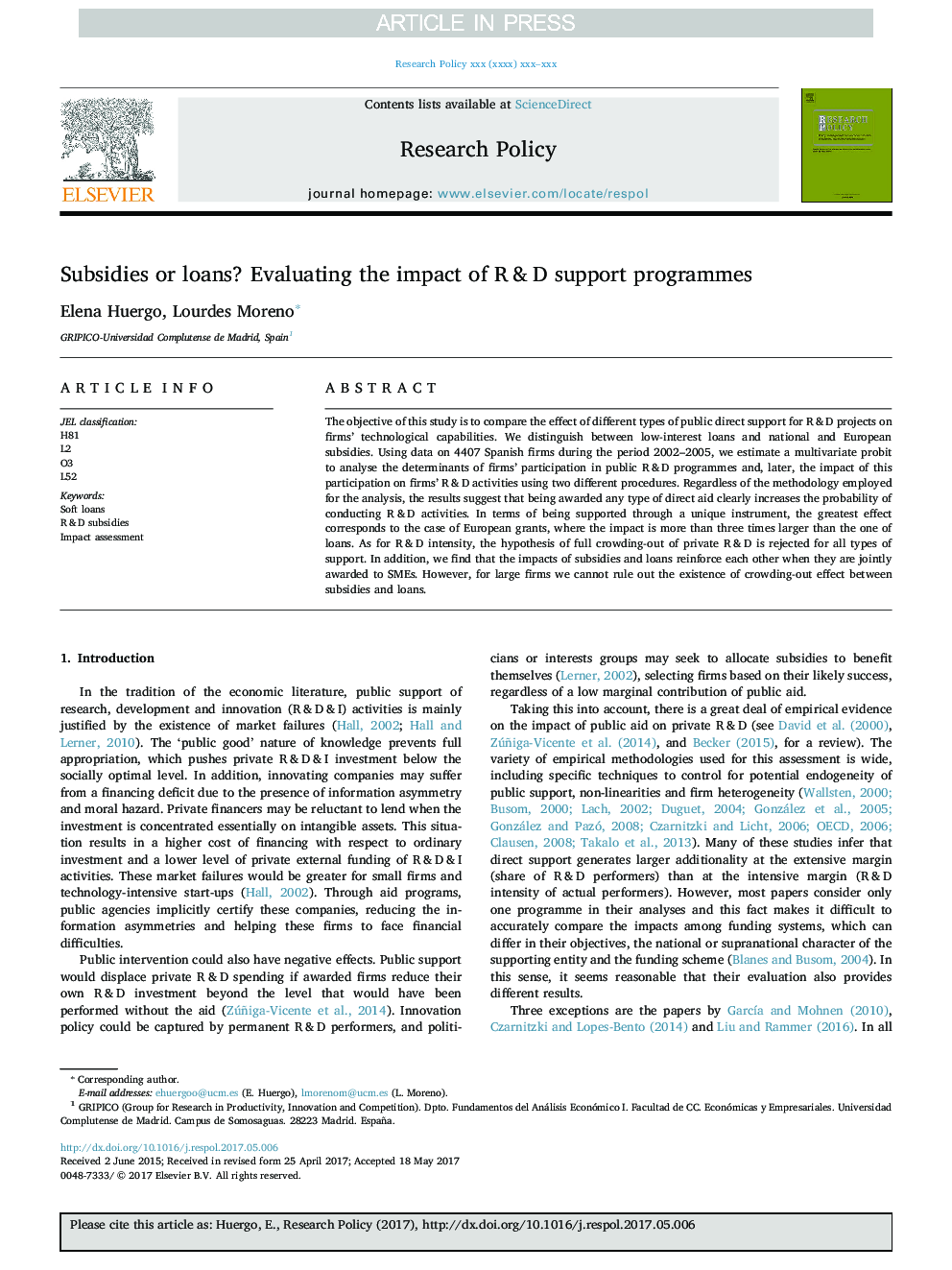| Article ID | Journal | Published Year | Pages | File Type |
|---|---|---|---|---|
| 5103885 | Research Policy | 2017 | 17 Pages |
Abstract
The objective of this study is to compare the effect of different types of public direct support for R&D projects on firms' technological capabilities. We distinguish between low-interest loans and national and European subsidies. Using data on 4407 Spanish firms during the period 2002-2005, we estimate a multivariate probit to analyse the determinants of firms' participation in public R&D programmes and, later, the impact of this participation on firms' R&D activities using two different procedures. Regardless of the methodology employed for the analysis, the results suggest that being awarded any type of direct aid clearly increases the probability of conducting R&D activities. In terms of being supported through a unique instrument, the greatest effect corresponds to the case of European grants, where the impact is more than three times larger than the one of loans. As for R&D intensity, the hypothesis of full crowding-out of private R&D is rejected for all types of support. In addition, we find that the impacts of subsidies and loans reinforce each other when they are jointly awarded to SMEs. However, for large firms we cannot rule out the existence of crowding-out effect between subsidies and loans.
Keywords
Related Topics
Social Sciences and Humanities
Business, Management and Accounting
Business and International Management
Authors
Elena Huergo, Lourdes Moreno,
